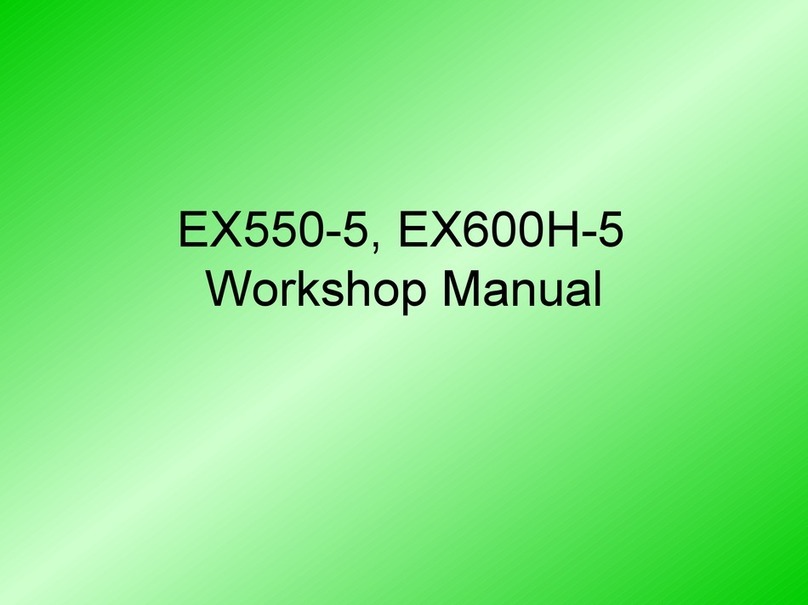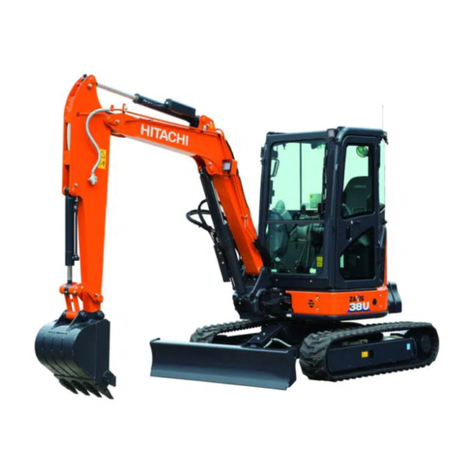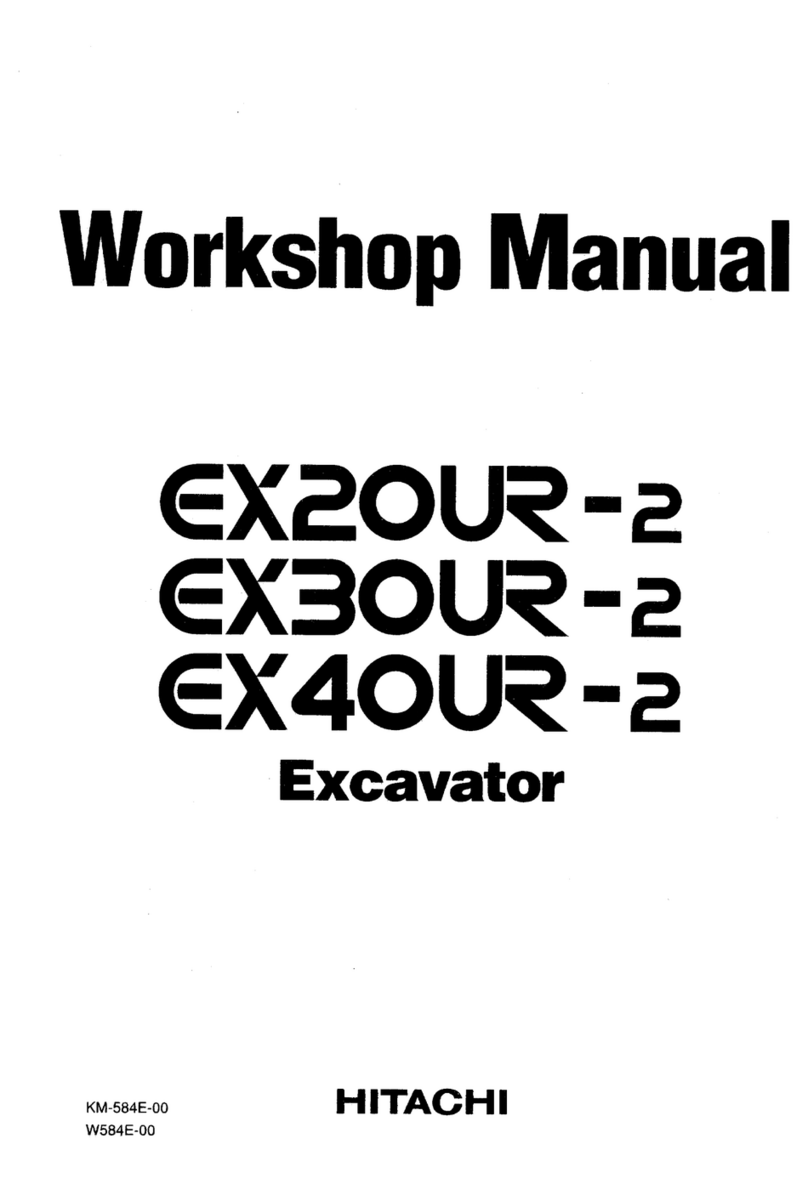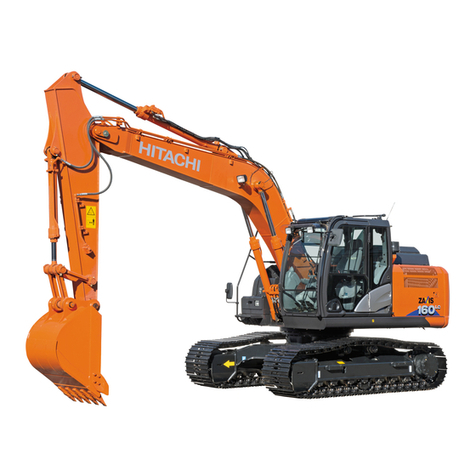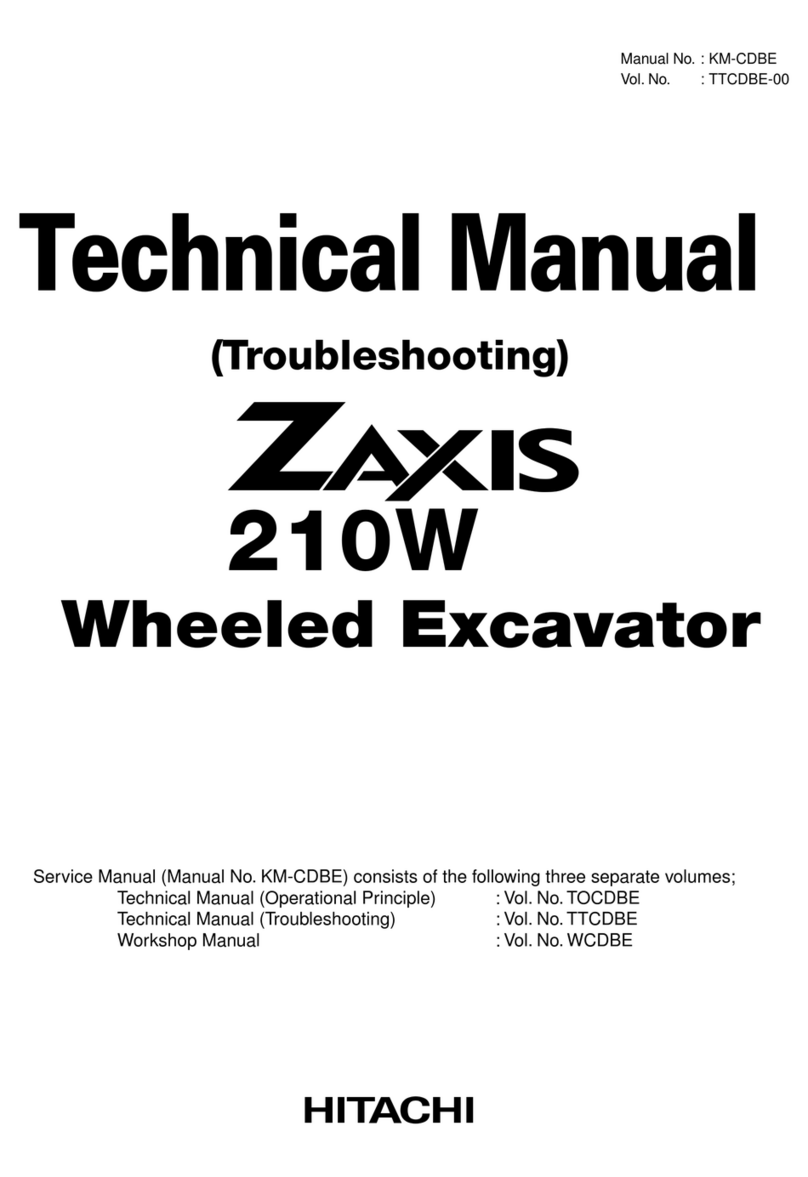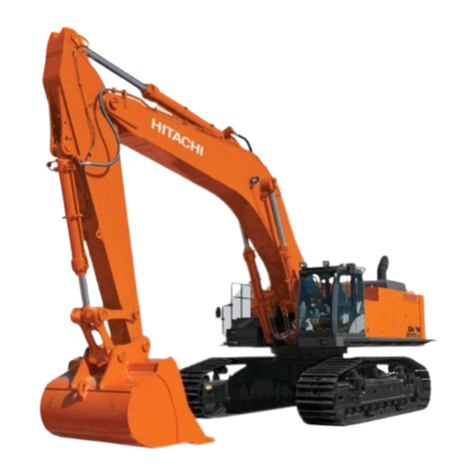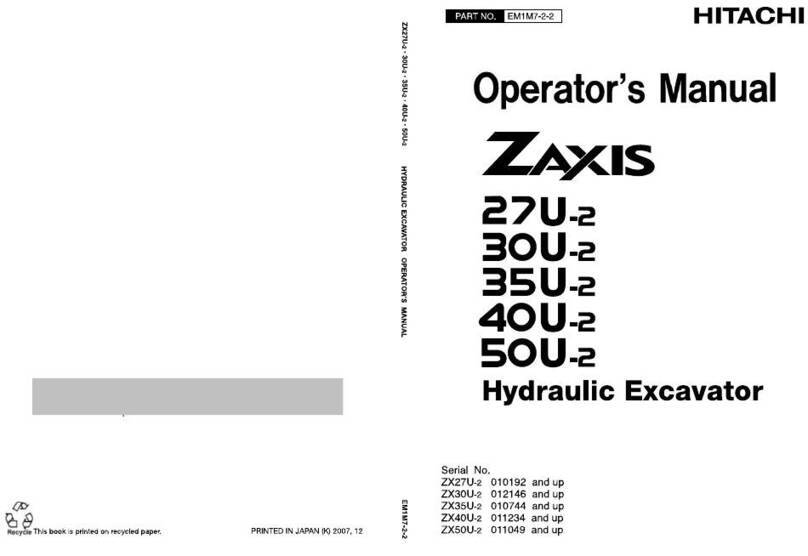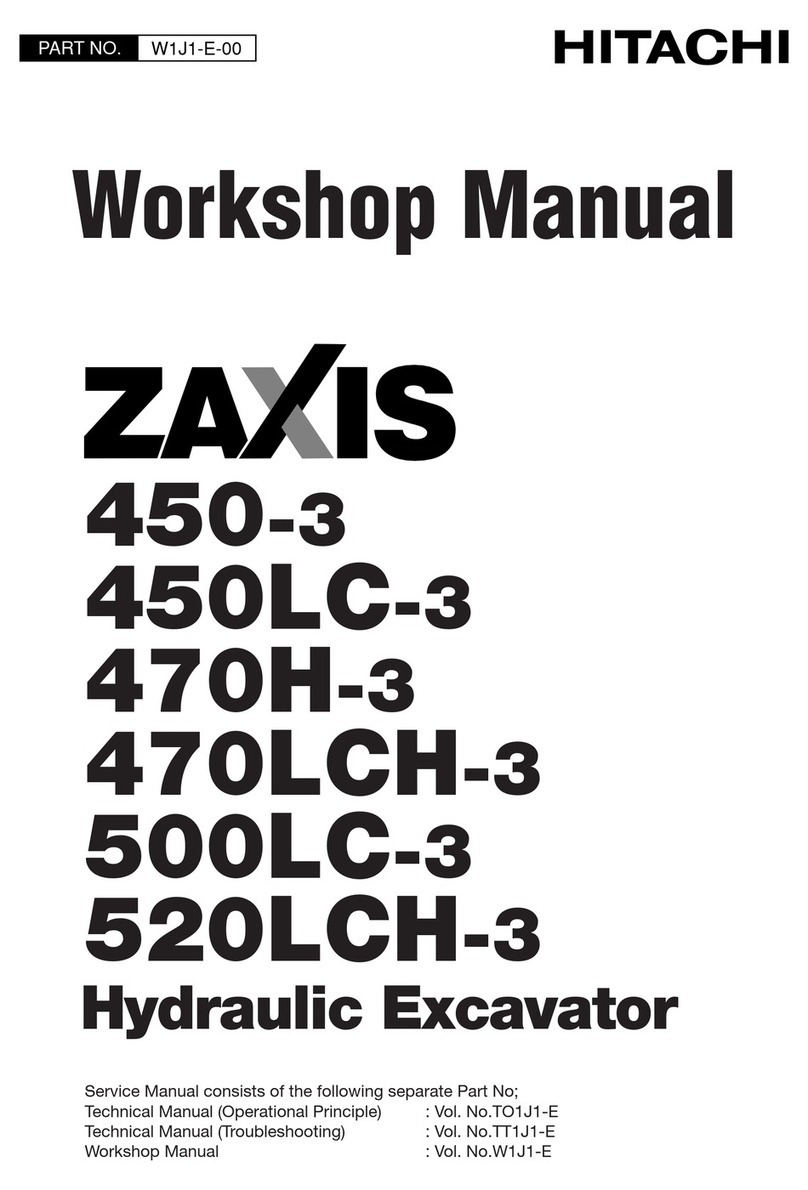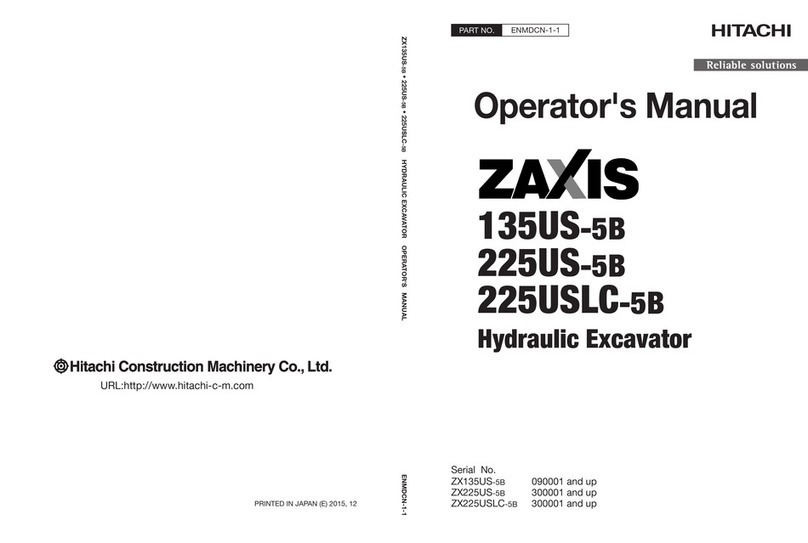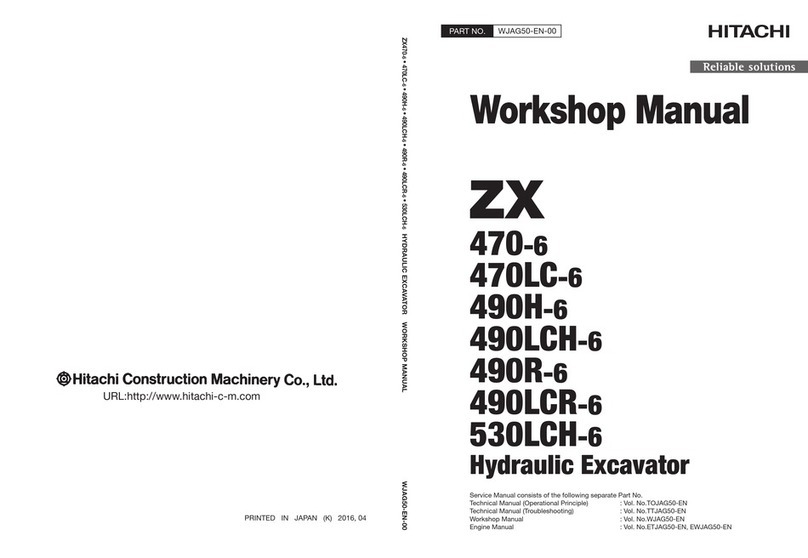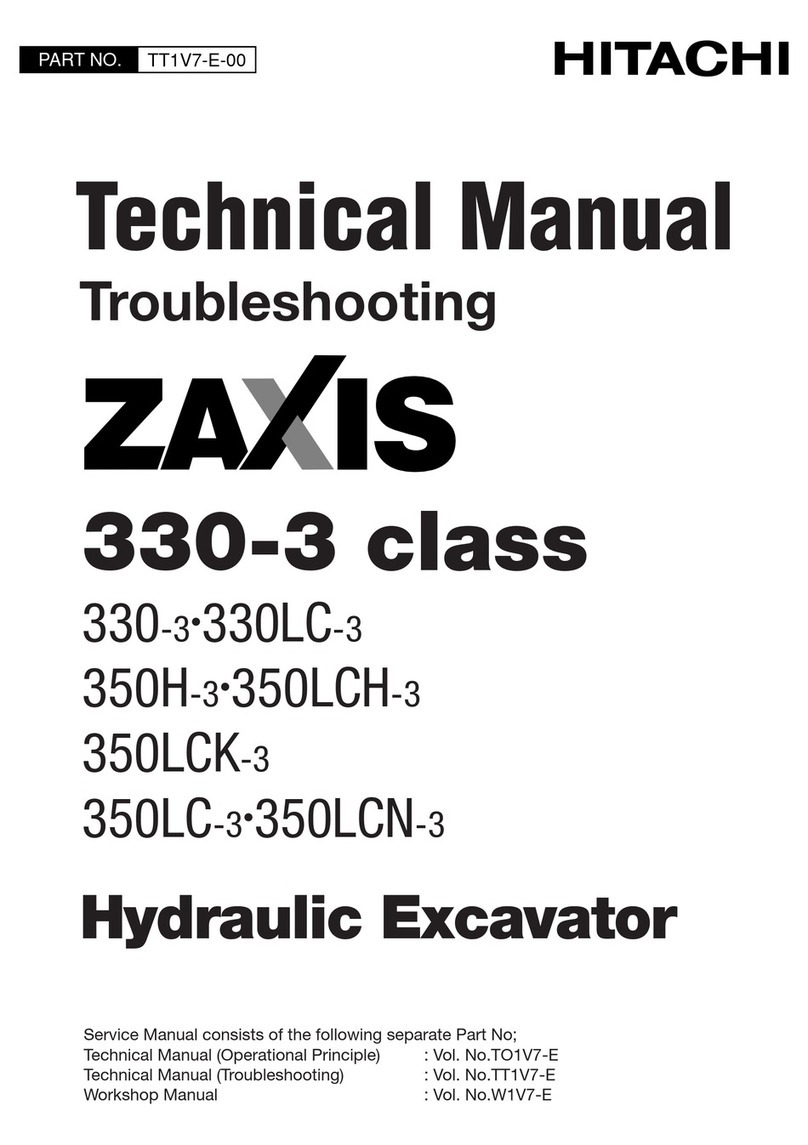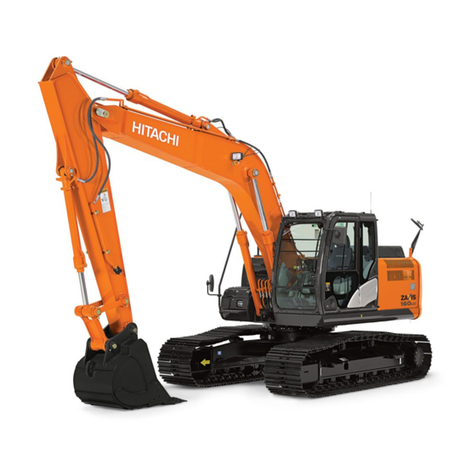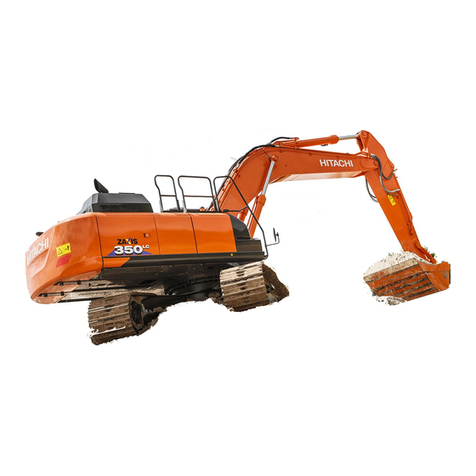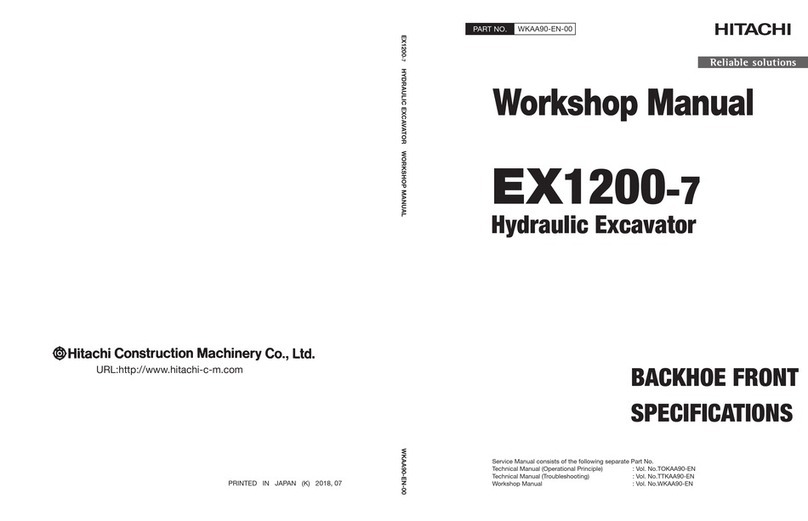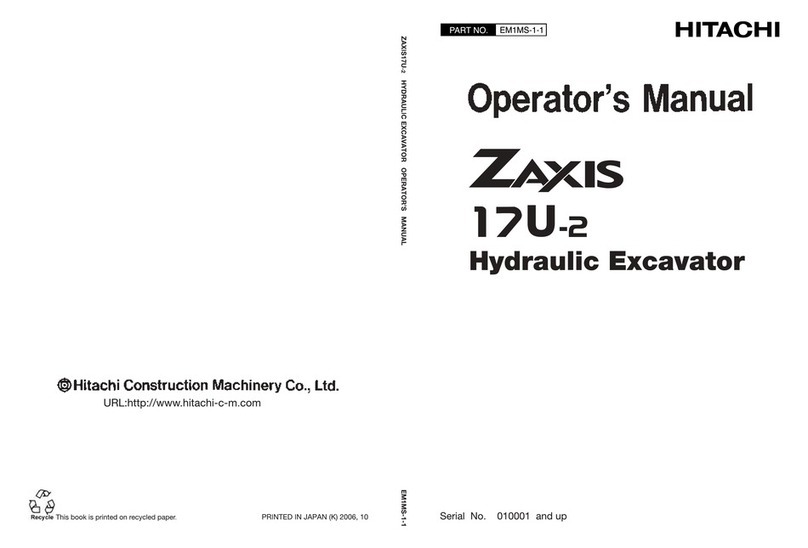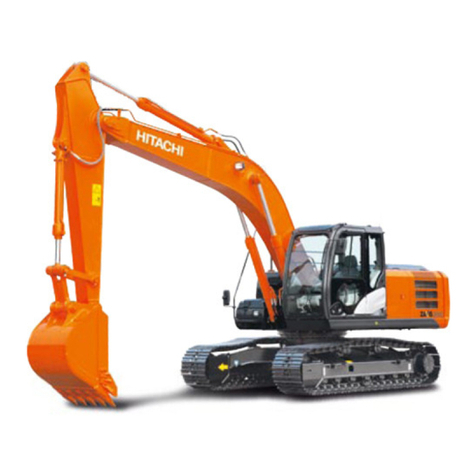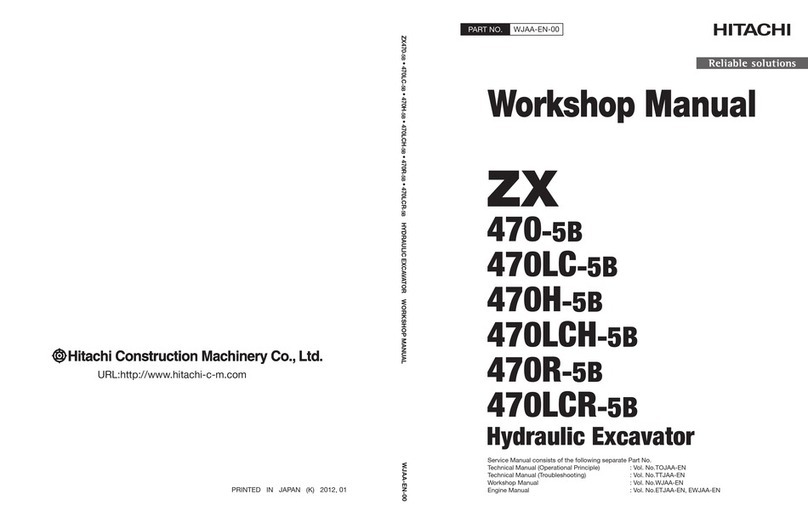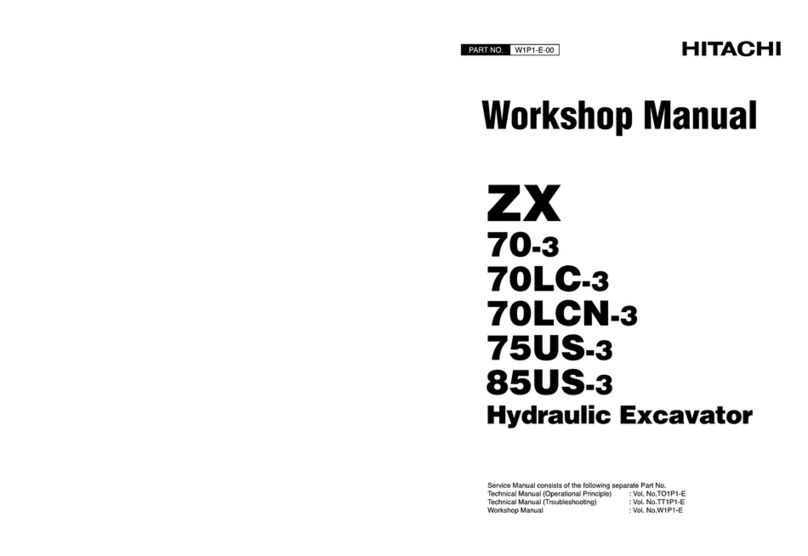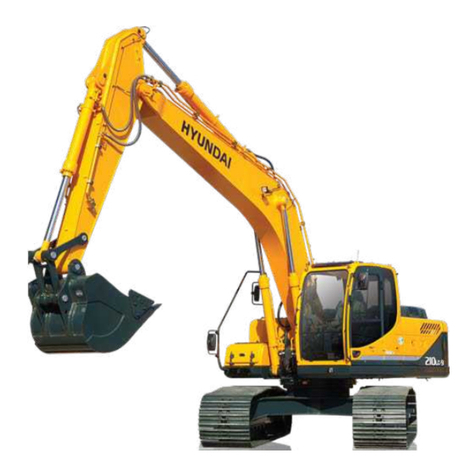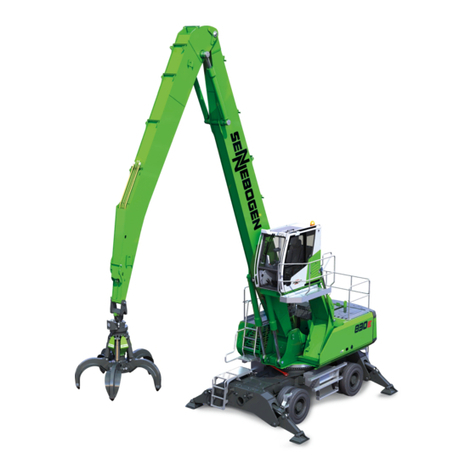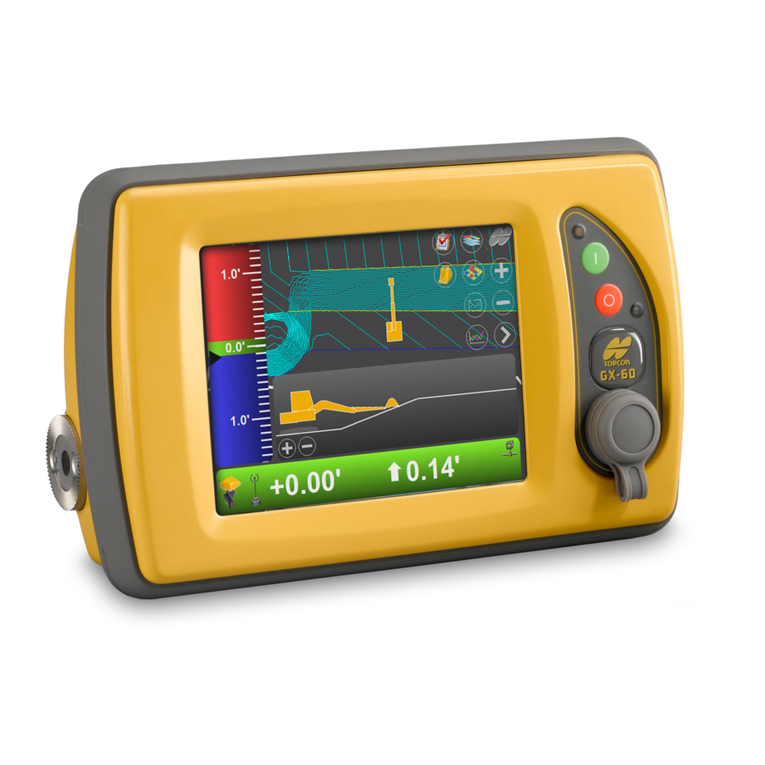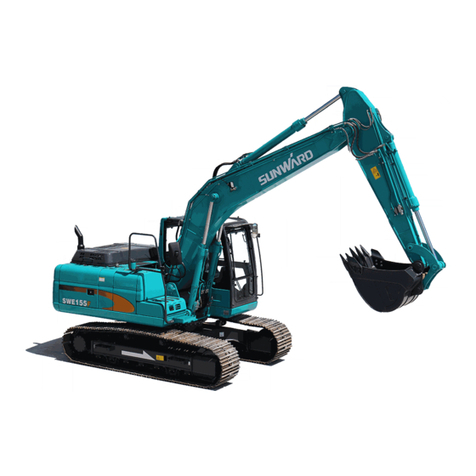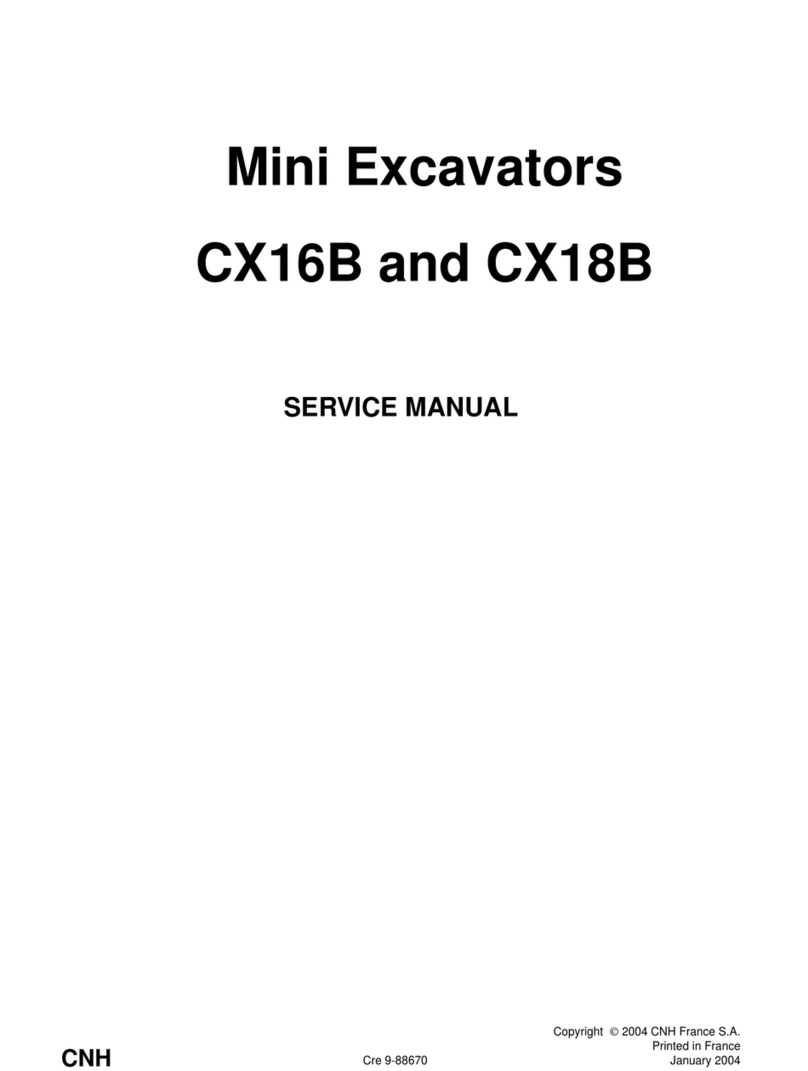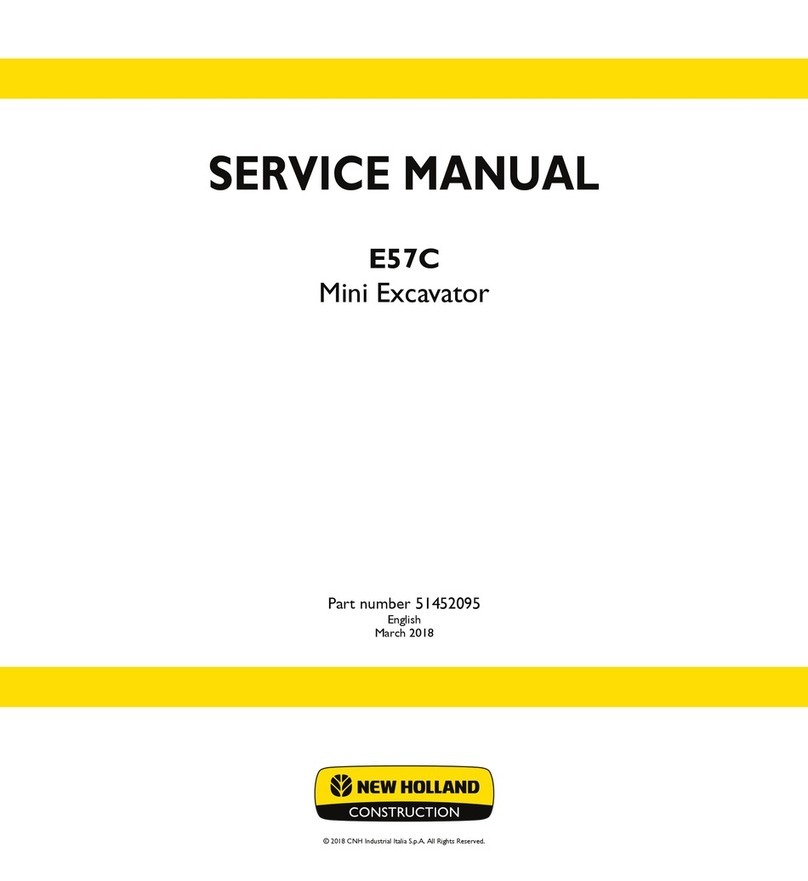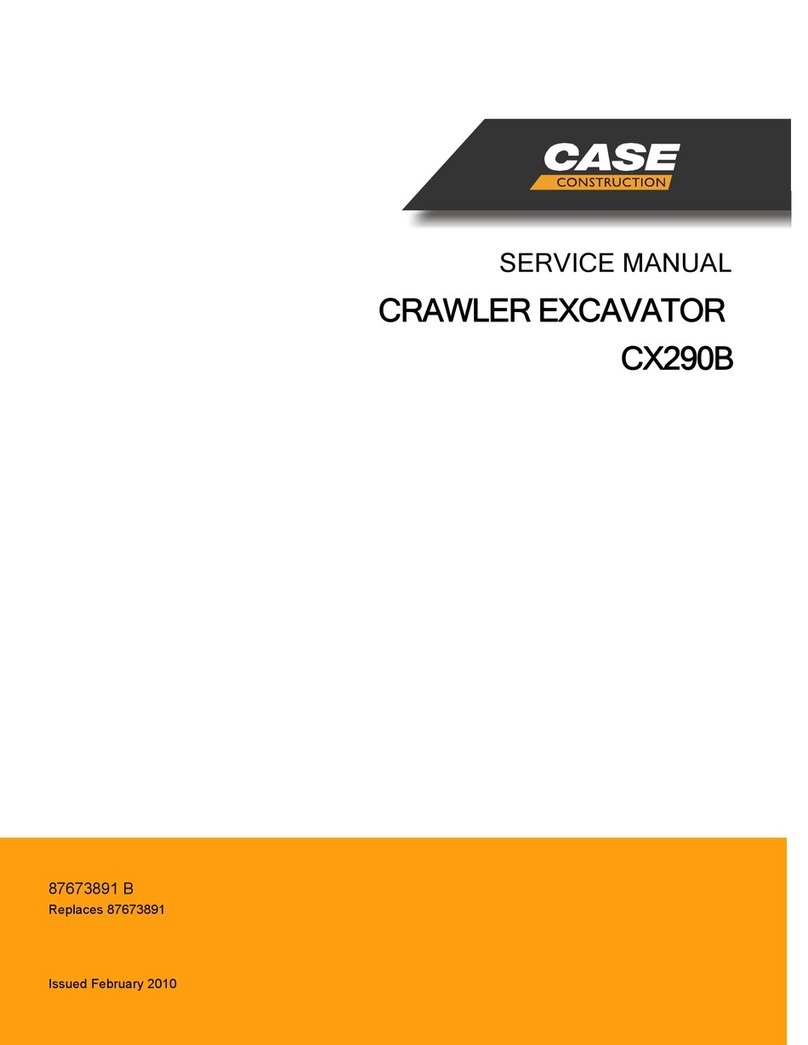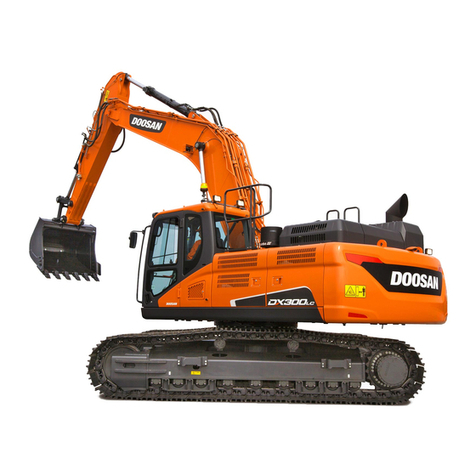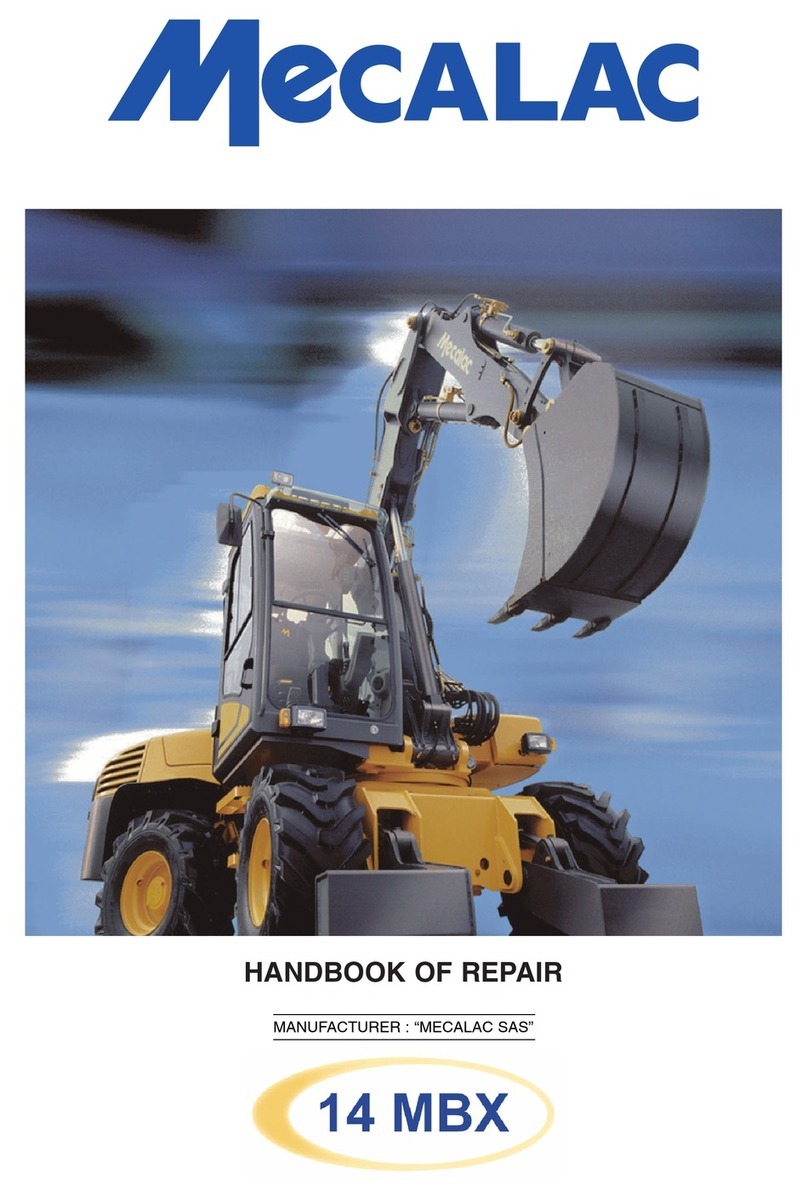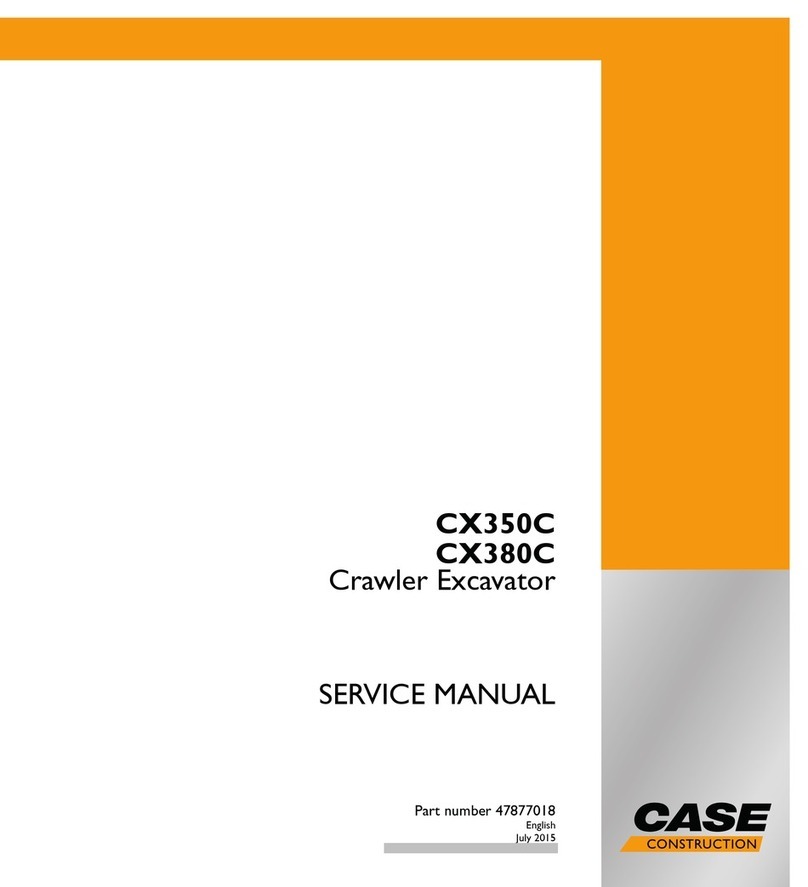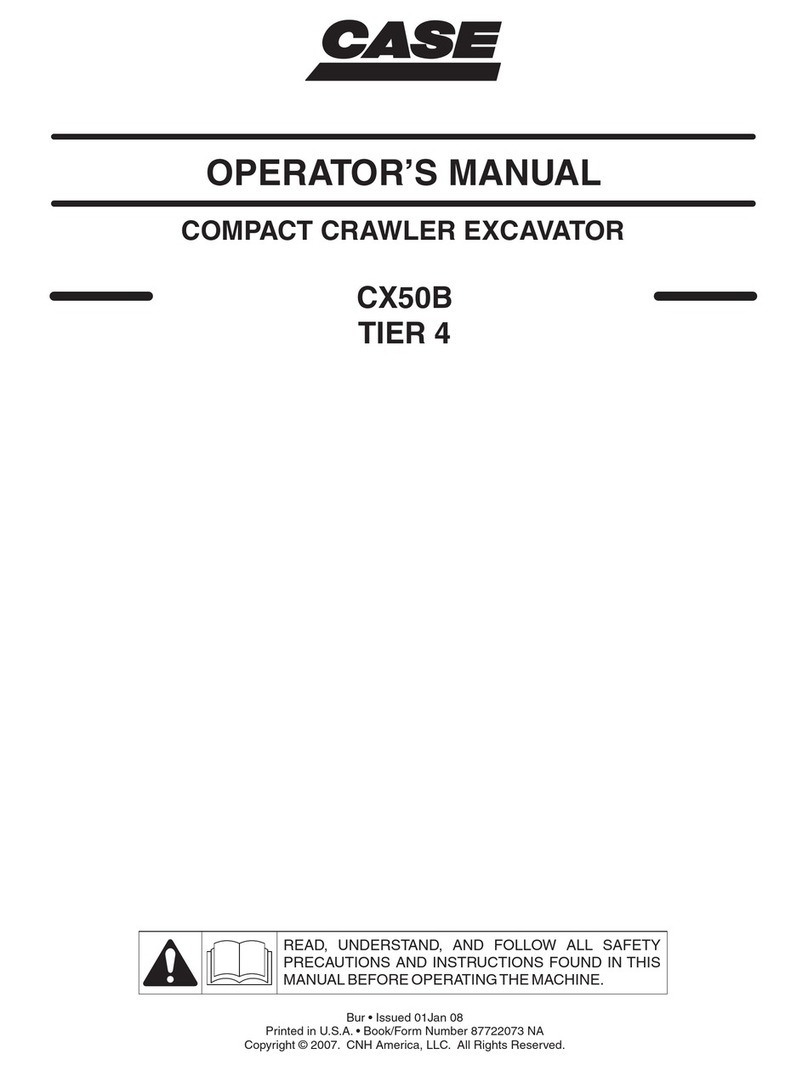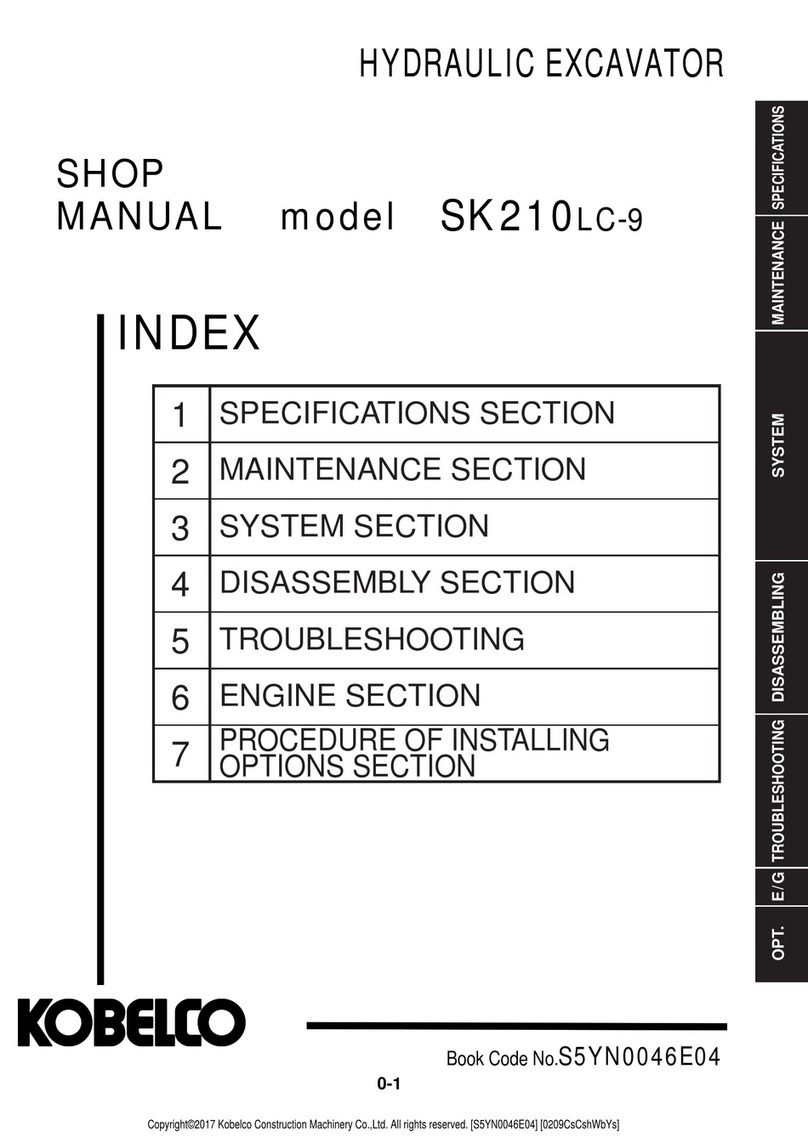
INTRODUCTION
IN-01
TO THE READER
• This manual is written for an experienced technician
to provide technical information needed to maintain
and repair this machine.
• Be sure to thoroughly read this manual for cor-
rect product information and service procedures.
• If you have any questions or comments, at if you
found any errors regarding the contents of this
manual, please contact using “Service Manual
Revision Request Form” at the end of this man-
ual.
(Note: Do not tear off the form. Copy it for us-
age.):
Publications Marketing & Product Support
Hitachi Construction Machinery Co. Ltd.
TEL: 81-29-832-7084
FAX: 81-29-831-1162
• This manual contains the revision information
to the 18, June 2007.
ADDITIONAL REFERENCES
• Please refer to the materials listed below in addition
to this manual.
• The Operator’s Manual
• The Parts Catalog
• The Engine Manual
• Parts Catalog of the Engine
• Hitachi Training Material
MANUAL COMPOSITION
• This manual consists of three portions: the Techni-
cal Manual (Operational Principle), the Technical
Manual (Troubleshooting) and the Workshop Man-
ual.
• Information included in the Technical Manual
(Operational Principle):
technical information needed for redelivery and
delivery, operation and activation of all devices
and systems.
• Information included in the Technical Manual
(Troubleshooting):
technical information needed for operational per-
formance tests, and troubleshooting procedures.
• Information included in the Workshop Manual:
technical information needed for maintenance
and repair of the machine, tools and devices
needed for maintenance and repair, maintenance
standards, and removal/installation and assem-
ble/disassemble procedures.
PAGE NUMBER
• Each page has a number, located on the center
lower part of the page, and each number contains
the following information:
Example : T 1-3-5
Consecutive Page Number for Each Group
Group Number
Section Number
T: Technical Manual W: Workshop Manual
Find manuals at https://best-manuals.com

